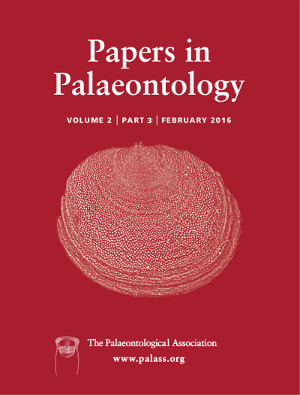Reg. Charity No. 1168330

The El Foyel Group is defined in the western section (Andean) of the Ñirihuau Basin, Argentina (41°44′S–71°30′W). It consists of three units: the Troncoso, Salto del Macho and Río Foyel formations. The age of the group and of the formations is still controversial. We studied the fungal remains recovered from 14 palynological samples from outcrops in the group with the intention of providing data to solve this problem. The fungal assemblage found is highly diverse and it is mostly composed of spores of different affinities (mainly ascomycetes). We identified 38 species from 18 genera (Anatolinites, Dictyosporites, Didymoporisporonites, Diporicellaesporites, Diporisporites, Dyadosporites, Exesisporites, Foveodiporites, Hypoxylonites, Inapertisporites, Lacrimasporonites, Monoporisporites, Multicellites, Papulosporonites, Pluricellaesporites, Polycellaesporonites, Staphlosporonites and one indet.). Moreover, we propose two new species (Hypoxylonites foyelensis sp. nov. and Pluricellaesporites patagonicus sp. nov.) and a new combination (Dyadosporites annulatus comb. nov.). Most of the species were recovered from samples from the Troncoso Formation (21), while the Salto del Macho and Río Foyel formations showed lesser diversity. Anatolinites subcapsilaris, Dyadosporites subovalis, Inapertisporites subovoideus, Monoporisporites singularovalis and Multicellites ellipticus, biomarkers from the Middle Eocene appeared in the Troncoso and Salto del Salto del Macho formations; whereas indicators of the Eocene–Oligocene, such as Dyadosporites elsikii, Didymoporisporonites panshanensis, Foveodiporites elegans, Lacrimasporonites fusoides and Multicellites leptaleus, were mainly recorded in the Río Foyel Formation. The appearance of the biomarkers mentioned above reinforces the Palaeogene age proposed for the El Foyel Group in previous palynological studies. The record of Hypoxylonites ater (Miocene) in the Salto del Macho formation would expand its range as far back as the Palaeogene.